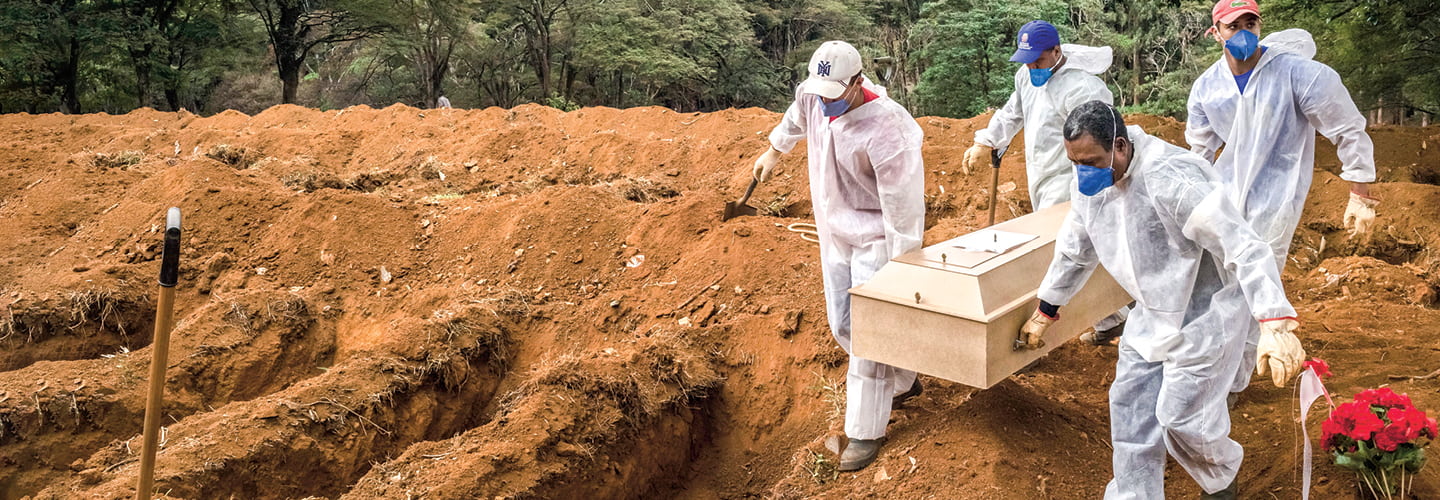Hospitals in Uganda’s capital, Kampala, are running out of space for Covid patients. In Brazil, people are dying of suffocation because there’s no oxygen for those who are desperately ill. In Indonesia, gravediggers are working into the night to bury all the latest victims of the coronavirus.
While Covid-19 had receded in much of the United States this summer and life was returning to something closer to prepandemic form, across the globe many countries are still fighting for their collective lives. In fact, the pandemic has tightened its grip in large swaths of the world, driven by highly contagious new variants and low vaccination rates in many places.
“In many parts of the world, the situation is very bad,” says Gavin Yamey of the Duke Global Health Institute. “There are epidemics really spiraling out of control in many of the countries of Latin America, sub-Saharan Africa, and Asia. And in many of these countries, there has been very little access to vaccine—1 to 3 percent of the populations have had a shot.”
Hospitals in Uganda’s capital, Kampala, are running out of space for Covid patients. In Brazil, people are dying of suffocation because there’s no oxygen for those who are severely ill. In Indonesia, gravediggers are working into the night to bury all the latest victims of the coronavirus.
Across much of the United States, Covid-19 had waned this summer and life was returning to something closer to prepandemic form. But many countries are still fighting for their collective lives. In fact, the pandemic has tightened its grip in large regions of the world. Highly contagious new variants and low vaccination rates in many places are fueling the spread.
“In many parts of the world, the situation is very bad,” says Gavin Yamey of the Duke Global Health Institute. “There are epidemics really spiraling out of control in many of the countries of Latin America, sub-Saharan Africa, and Asia. And in many of these countries, there has been very little access to vaccine—1 to 3 percent of the populations have had a shot.”

